The Watergate break-in and burglary in Washington, D.C., still was about nine months from taking place, but spying and potential dirty tricks already were part of a fierce Eastern League rivalry.
St. Augustine’s defending San Diego Section champion was scheduled to play Patrick Henry, the city’s “elite”, newest public school, one that quickly had become thought of as being a little full of itself.
In only its fourth year, the San Carlos campus numbered 3,281 students in three grades and would grow to more than 4,000 later in the decade, making it one of the larger three-year schools in the state as well as the country.
Head coach Russ Leslie had smoothly built a strong program, posting records of 5-4 and 6-3 in its first two varsity seasons.
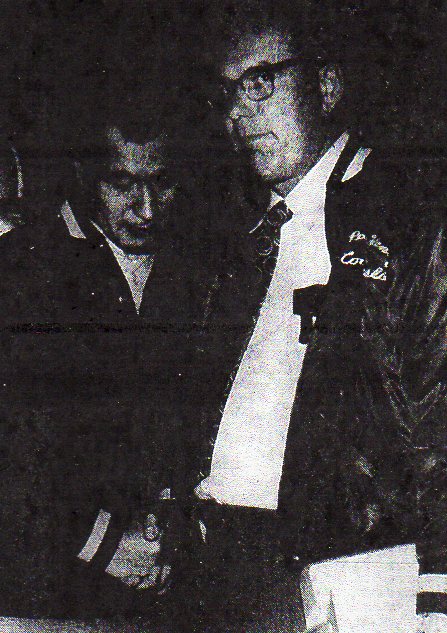
Nine miles away in North Park, nestled amid 50- and 60-year-old Craftsman homes, St. Augustine annually enrolled no more than 650 in an all-boys environment and for years had sought respect and recognition.
As defending champion, the Saints were the preseason top-ranked by the Evening Tribune.
The Patriots were No. 2 but the probable favorite to win the San Diego Section championship, especially after a 17-0, opening-game victory over 1970 finalist Grossmont that was followed by a 24-8 win over Point Loma.
The Saints also had opened smartly with victories over Clairemont, 32-0, and University, 21-6, under new coach Larry Shepard, a fiery competitor who learned at the knee of the legendary Birt Slater and had led Kearny to the 1963 title.
CAUGHT IN THE ACT
Leslie was directing practice Tuesday before the game when it was brought to his attention that St. Augustine students were attempting to “chart and photograph” Patriots’ formations and plays.
“At first we noticed two of them sitting in the stands,” Leslie told the Evening Tribune’s Bill Finley. “We have four or five kids patrolling the place and they saw these guys writing information in their tablets (probably three-hole binders; this long before I-Pads).
Leslie continued. “Okay, so we asked them to leave. A little while later, though, we noticed the two of them along with a third guy in a Saint letterman’s jacket watching us from their car on the hill overlooking our practice field.”
The Patriots swung into action.
“Some of our players scrambled up the hill, jumped the fence and caught them,” said Leslie.
Leslie offered some evidence. “We have the letterman’s jacket and the camera,” he said.
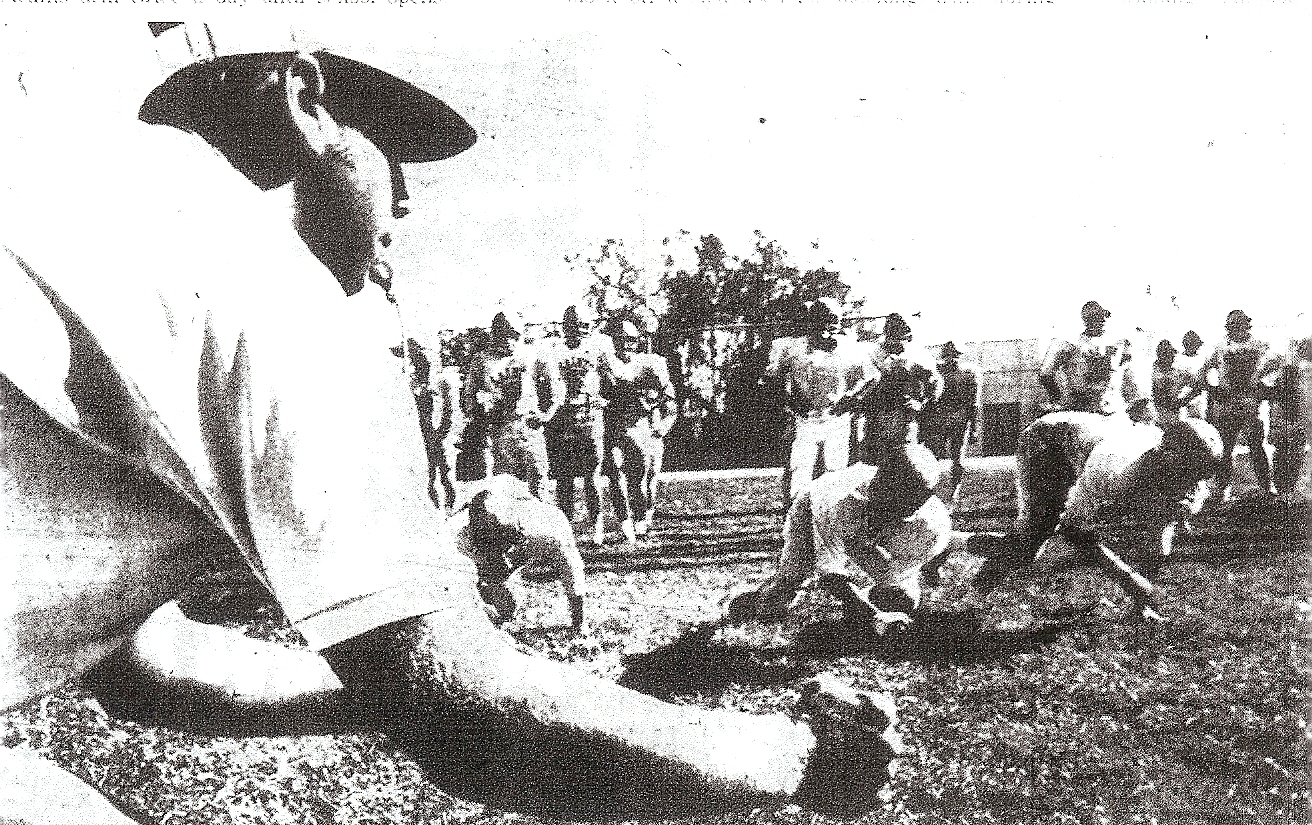
SHEPHARD RESPONDS
Bill Finley made a telephone call to St. Augustine coach Larry Shepard.
“Yeah, those were our kids,” said Shepard, who added, “I didn’t send them. They did it on their own.”
Shepard told the writer that the students had come to the coach’s office the following morning. “They said, ‘Here’s what they’re doing’ and gave me some stuff on paper. You know, I threw it all away.”
PHONE LINES SCORCHED
Shepard discounted the value of the students’ “scouting”, but was beginning to warm up.
“They can talk all they want about this ‘spy’ stuff, but somebody out there with a good mouth has been calling our coaches and players at home all week to tell us what’s going to happen to us on Friday night.”
Things had not been rosy between the schools since Henry upset the Saints, 7-0, in 1969, forcing a three-way tie for the Eastern League championship with Henry and San Diego.
“Sure, we remember that,” said Shepard.
“What we remember most is that someone watered the (Aztec Bowl) field the day of the game. We had all that speed in Jesse Ochoa and Frank George and there was no way in the world they could get outside in that muck.”
The Saints won, 7-6, in 1970 and Shepard told Finley he personally made sure that there was no watering of the Balboa Stadium gridiron, which represented the Saints’ home field.
And this year, at Aztec Bowl?
“We’re going to have a guy out there keeping an eye on the sprinklers.”
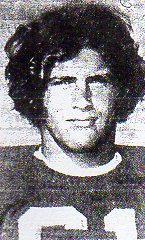
MANY MASCARIS
St. Augustine linebacker Larry Mascari was the sixth from his family to play for the Saints. He was preceded by his dad, Larry, Sr.: uncle, Clarence, and brothers Frank, Billy, Phil, and Mike….
THEY LOOK LIKE THE PACKERS
Patrick Henry’s colors were green and gold and its uniforms were replicas of the Green Bay Packers. The Patriots wanted to run the ball in the fashion of Vince Lombardi’s teams.
Patrick Henry won the early showdown with the Saints, 17-8, rolled all the way to the San Diego Section finals, and lined up again against Grossmont.
“Our team is the type no one likes to see,” said Leslie, pointing out that the Patriots ran 17 consecutive plays off tackle in a 14-8, semifinals victory over El Capitan.
“I’m tired of reading about ‘em,” said Grossmont coach Pat Roberts. “Every time I think about ‘em I get an anxious feeling from head to toe.”
Roberts’ anxiety was relieved when the Foothillers drove 90 yards to a tying touchdown with 9:38 left in the game.
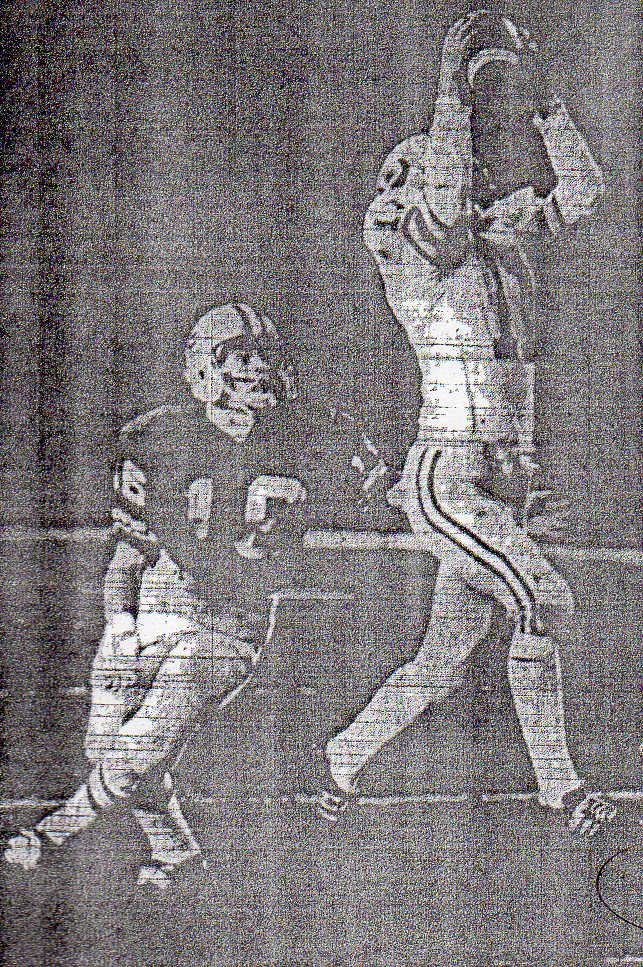
LET’S GO FOR 2
Grossmont then executed a two-point conversion and edged the Patriots, 8-7, in the lowest scoring San Diego Section final, a yawner played before more than 13,000 in San Diego Stadium.
Grossmont quarterback Mike Rundle kept the winning play alive, drifting out of the pocket before he passed to tight end Chuck North in the left corner of the end zone.
“That’s the first time we’ve run that play to the left,” said Roberts. “We’ve run it to the right, but they had us scouted.”
“The play should work every time,” said Rundle. “They’re trying to cover three receivers with two defenders.”
Henry contributed to its defeat with three intercepted passes and five lost fumbles.
Roberts pointed to running backs Larry Olson and Mike Hicks when asked why the Foothillers usually disdain the pass, but the coach added, “Maybe I don’t have enough guts. Whenever we pass I want to hide under the bench.”
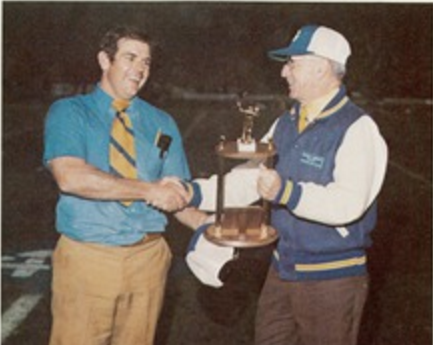
HAINES AGREES
Vista’s Dick Haines echoed Roberts.
“Look at the pros,” said Haines. “Teams that pass 30 times a game lose. Teams that pass 10-15 times a game win, but maybe we’re just cowards.”
Nick Canepa of the Evening Tribune suggested that Haines brought some of Woody Hayes’ Ohio State offense when Haines relocated from Dover, Ohio.
A 34-12 defeat of Oceanside was Vista’s first over the Pirates since 1960 and only their third in 27 years.
The win was the 131st in Haines career.
“I wouldn’t have known that if my wife hadn’t told me,” claimed the Panthers’ mentor, who won 12 consecutive league championships in Ohio and took with him to Vista assistant coaches Dave Parks and Steve Korcheran.
Haines won 125 games in the community 80 miles south of Cleveland and would claim another 194 at Vista before he retired following the 1994 season.
Vista, 0-9 in 1969 and 4-5 in 1970, Haines’ first season, completed a remarkable turnaround, closing at 10-1 following a 34-7 playoff loss to Grossmont.
DEDICATED TO FALLEN COACH
Clairemont players voted to play the day after popular teacher and coach Gerry Stryker was killed in a plane crash following takeoff from Montgomery Field.
Stryker, 32, a Kearny and San Diego State graduate, and his parents and brother perished along with Stryker’s uncle, who was piloting a twin-engine craft.
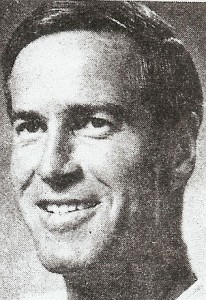
The plane struck power lines on both sides of the I-805 construction site and crashed into a house in the 4000 block of Antiem Street.
No one was hurt on the ground, although Mrs. Edward Peterson told investigators she was thrown from her bed after the plane tore out a tree and crashed into the side of her residence.
Observers reported that the plane began to lose power after takeoff.
“This game was solely for coach Stryker,” said Mark Jones, who rushed for 138 yards in 33 carries and scored the winning touchdown with 1:30 remaining as the Chieftains defeated University, 22-20.
KOMETS NOW 0-5
Kearny was going nowhere in the playoffs but traveled in style to get there.
The Komets were bounced by Grossmont, 21-17, in the first round, making their fifth consecutive early exit, but Kearny ended the season with a Western League winning streak of 28 games and 33 without loss.
Kearny couldn’t stop a Grossmont play called “52 Veer”, which the Foothillers ran with success through the left side of the Linda Vistans’ defense.
“I think we called it five times and got four big gains,” Grossmont’s Roberts said of the maneuver.
“We’re snakebit,” said Kearny coach Birt Slater.
On the brighter side, the Komets hadn’t been beaten in league play since dropping a 19-14 decision to Point Loma in 1966.
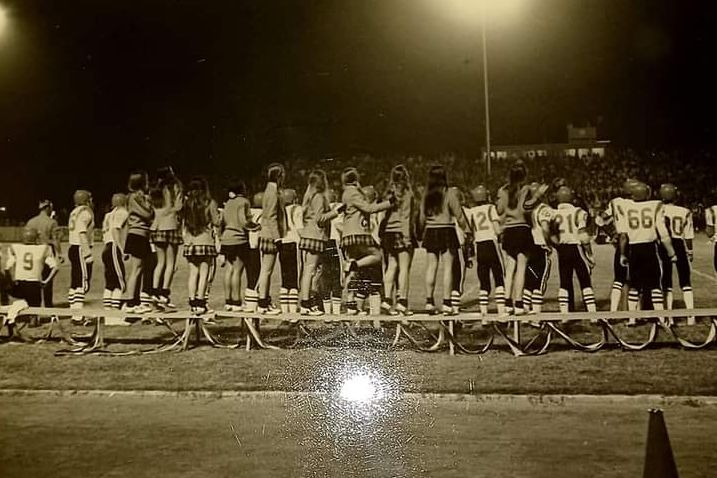
FRIDAY NIGHT LIGHTS
Only 28 of Marian’s first 86 games since the school opened in 1961 were played on campus. Night games at home were out, until Week 3 this season.
“We got some old lights from Mar Vista and we’re in the process of aiming them,” Crusader coach Joy Gritz told Will Watson of The San Diego Union.
Gritz singled out booster club president Chuck Perkins: “He got the lights, some old telephone poles, and put the transformer in.”
It was Coronado that saw the light(s), defeating the host Crusaders, 10-7, in Marian’s first home game under the arcs.
WHAT IS CETY’S?
The name began showing up in results involving San Diego teams in 1969, when Mountain Empire scored an 18-6 victory over CETY’s of Mexicali. Borrego Springs dropped a 23-8 decision this season.
Centro de Ensenanza Tecnica y Superior of Mexicali opened in 1961. Translated the name essentially means Superior Technical Education Center.
A Tijuana campus would open in 1972 and another in Ensenada in 1975.
San Diego teams in the future would schedule many American football games against squads from the two older Mexican institutions that offer high school and university business and technical curricula.
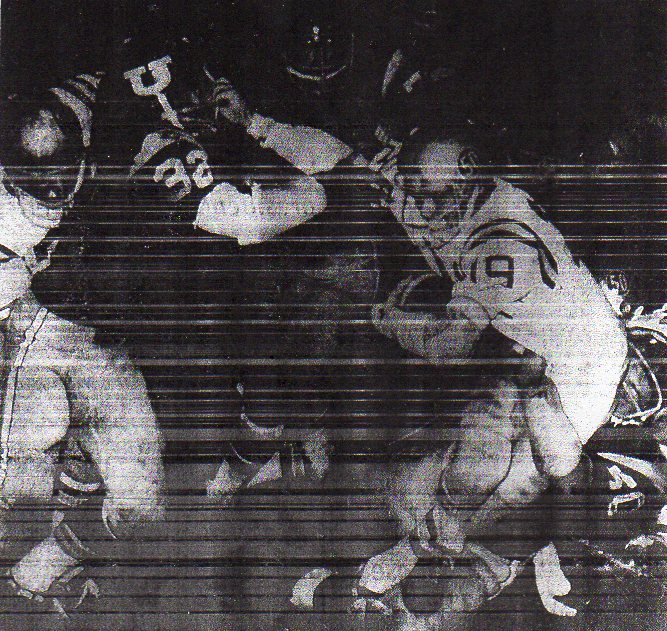
TRANSBAY CAMELOT
Coronado raced to a 5-1 start, its best since the Harry Sykes days and the 8-2 club of 1951.
A 5-0 start in the Metropolitan League also had Islanders followers honking horns on Orange Avenue and celebrating on their yachts in Glorietta Bay.
“We haven’t met the strength of the league,” cautioned coach Gene Greene before a 16-7 victory over Bonita Vista.
Greene knew. A capacity crowd of more than 3,000 at Cutler Field the next week witnessed a 38-0 loss to Sweetwater.
Coronado was outscored, 85-21, in its last three games, all losses.
Despite the flat finish the Islanders’ 5-4 record was their best since the Roger Rigdon-coached squad was 4-3-1 in 1962.
Quarterback Jim Skaalen, who would go on to a 40-year career as a player, scout, and major league coach in baseball, was so valuable that Greene said, “If we lose him we might as well close our doors and go home.”
Skaalen also starred in basketball and signed a baseball contract out of San Diego State.
WALLY’S WORLD
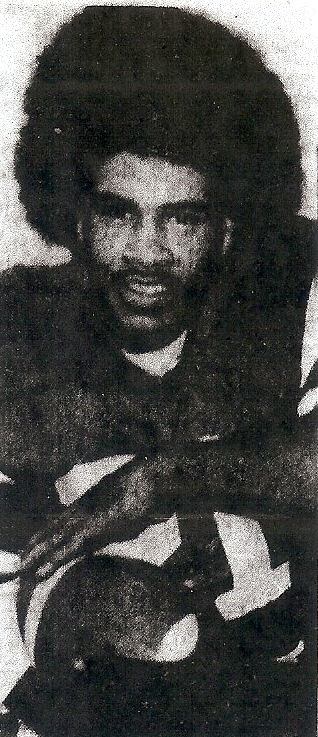
The yards weren’t coming for Wally Henry. He rushed for 910 and made the all-San Diego Section third team at San Diego as a sophomore.
Henry transferred to Lincoln and his numbers fell off to 600 yards this season.
“We just don’t block for him,” said Hornets coach Earl Faison. “If he could block for himself he’d be a lot better off. Wally might be the best blocker we have.”
That Henry was as dangerous as any runner in the area was demonstrated when he scored on a game-deciding 26-yard run as Lincoln beat Crawford, 10-7, knocking the Colts out of the playoffs, and pushing Lincoln through the door.
INSECT INFESTATION?
“A cold East wind swept through here making it an evening not fit for man or beast. But it apparently was perfect weather for Bugs.”
So wrote the Tribune’s Harlon Bartlett on a blustery, late-fall night at Ramona High, where Julian’s James (Bugs) Ponchetti rushed for 194 yards in 28 carries and scored three touchdowns.
The 170-pound Ponchetti, a Diegueno Indian from the Santa Ysabel band, also played middle linebacker as the Eagles defeated Army-Navy, 30-8, for the San Diego Section A (small schools) championship.
“Bugs”, who has a brother named Charles but is better known as “Goody,” also led the section in scoring with 118 points.
A STEP FORWARD
Football would not come until 1983, but The Bishop’s School became co-educational for the first time since opening in 1909 when the all-girls La Jolla student body merged with San Miguel School.
San Miguel originally was located in National City but moved to Linda Vista to a site that would be occupied by upper level students of Francis Parker.
Parker, which began as a college prep curriculum in 1912, had housed all students at its Mission Hills location.
THEY SAID IT
University coach Robert (Bull) Trometter, on the origination of his nickname: “I used to smoke Bull Durham tobacco. I couldn’t afford the expensive stuff.”
Santana coach Joe DiTomaso, on diminished success at Santana after a 12-0, season at St. Augustine in 1970: “The last time I walked on water, I fell in.”
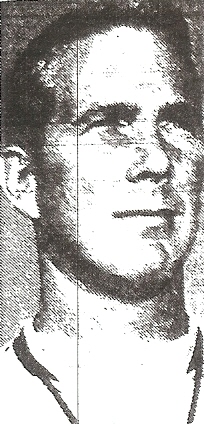
QUICK KICKS: Sweetwater’s Steve Riiff set a San Diego Section record with 52 career touchdown passes, bettering the 48 by San Diego’s Ezell Singleton from 1956-58…Riiff’s mark would stand until Helix’ Jim Plum passed for 70 touchdowns from 1979-81…El Capitan outscored Helix, 14-0, in one quarter and led the East to a 14-0 victory over the West in the 11th annual Grossmont league carnival actually 16th including 1957-60, when the schools were in the Metropolitan circuit…St. Augustine was in its 50th season, but Crawford ate the celebratory cake, winning, 21-14,in a wild game that saw a total of 185 yards in penalties and St. Augustine quarterback Charlie Flower’s being ejected for throwing a punch at Crawford’s Mike Oliver…Crawford’s victory “was the best win for me since I’ve been a head coach,” said the Colts’ Bill Hall…Hall was 1-8 in 1970 but improved the Colts to 6-2-1 this year….
*With apologies to the late, syndicated gossip columnist Walter Winchell, who described bitter rivals as “don’t invitems”, as in don’t extend them an invitation to the same event.

Centro de Enseñanza Técnica y Superior. :-)
Thanks, Matt. I made the correction.